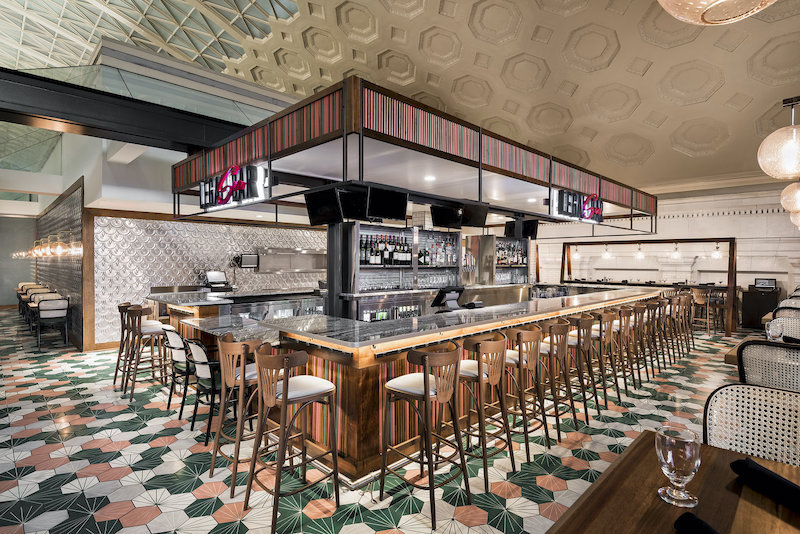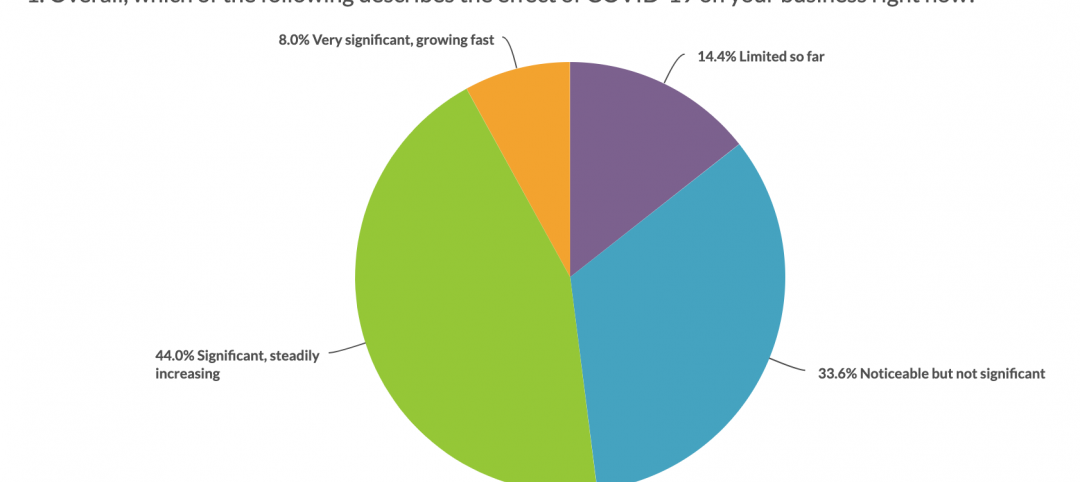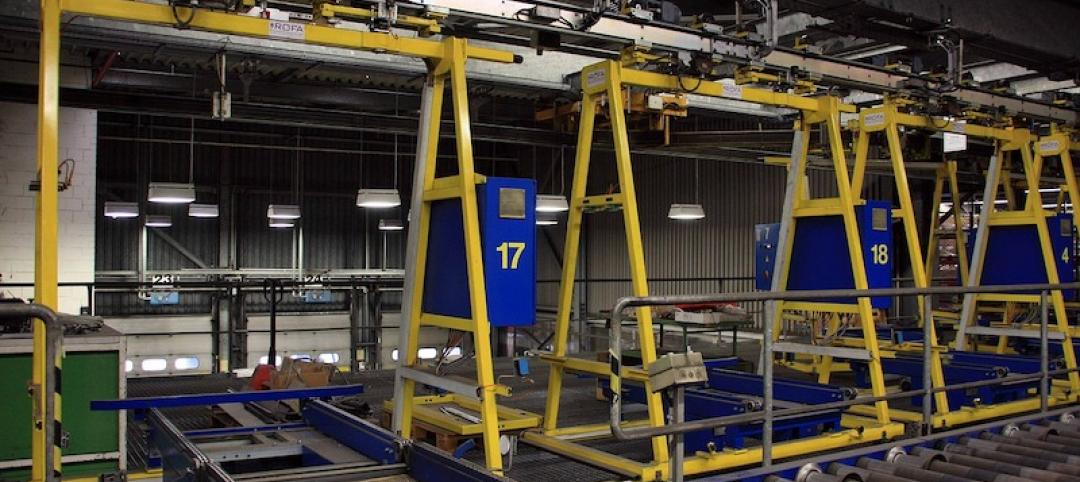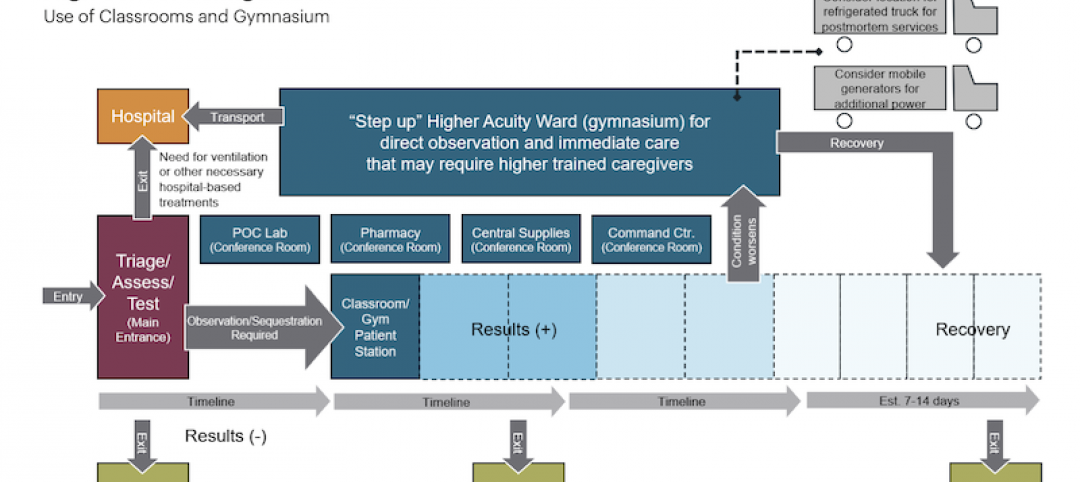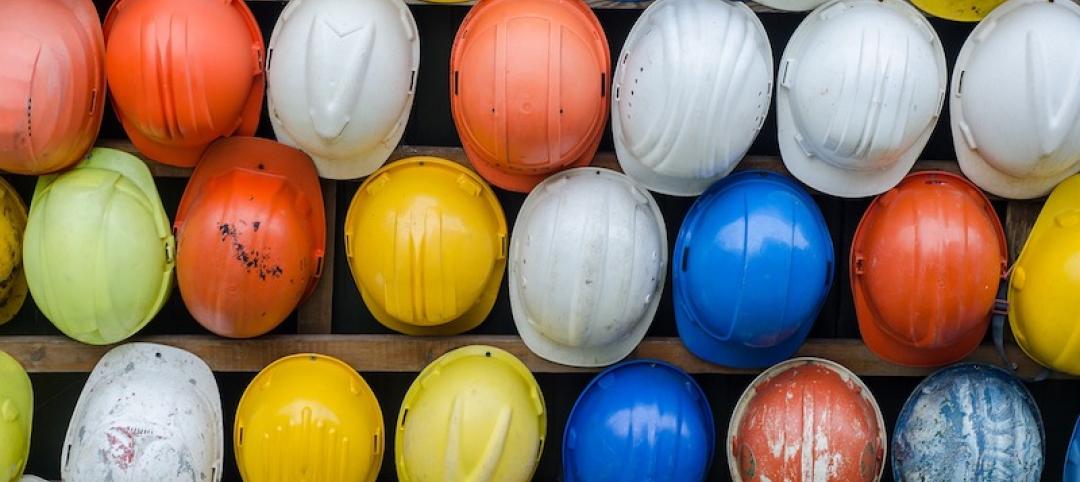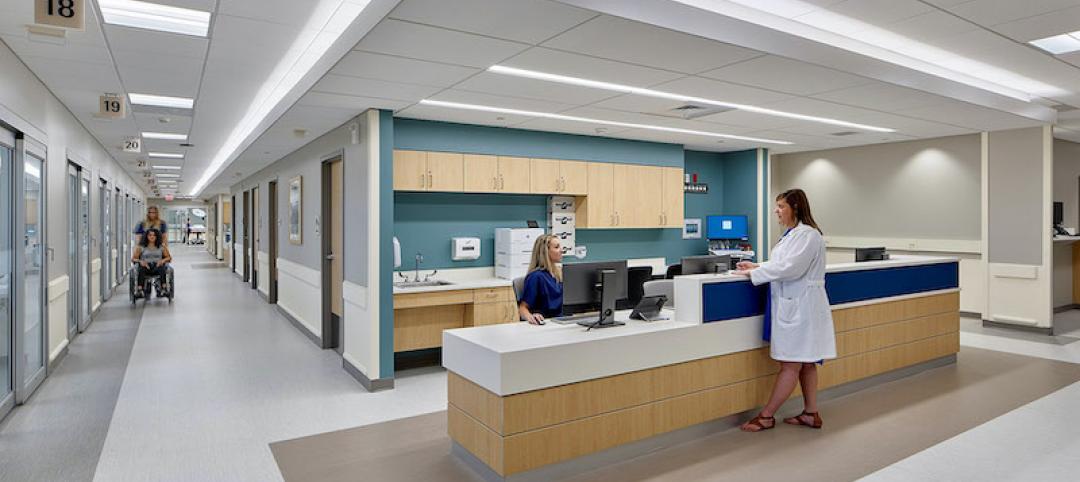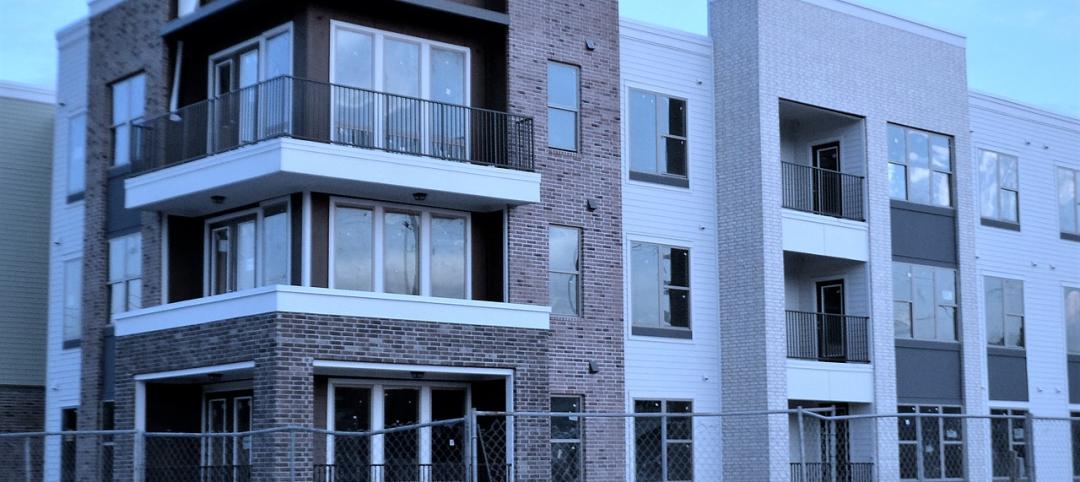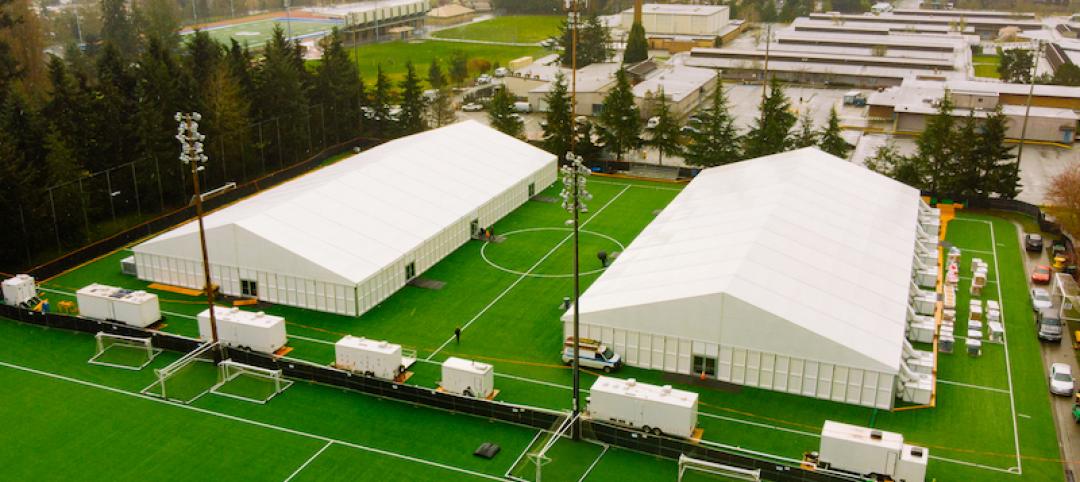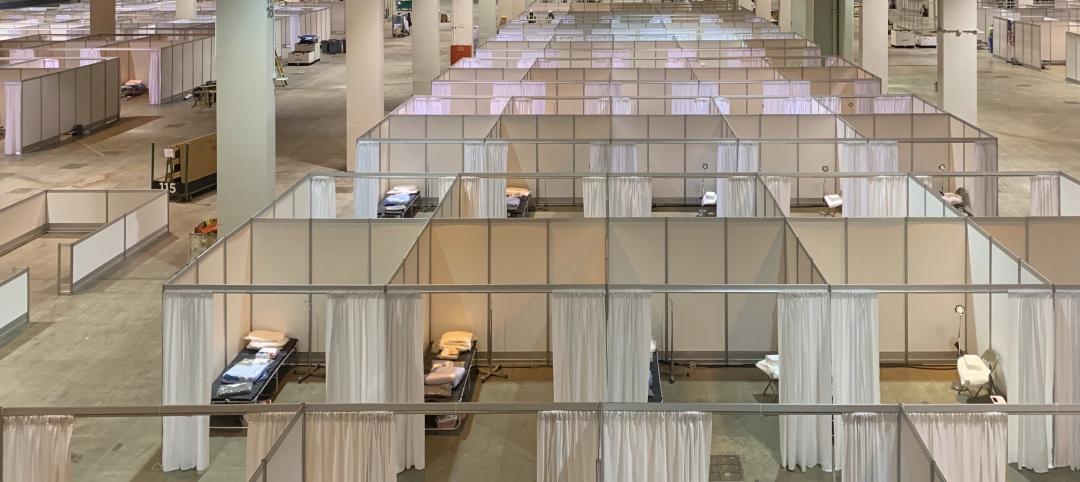Tens of thousands of restaurants and hotel rooms in the U.S. have been vacant as a result of the novel coronavirus. The U.S. Bureau of Labor Statistics estimates that the leisure and hospitality sector lost 7.7 million jobs in April alone, with restaurants taking most of that hit, and the sector’s unemployment rate soared to 39%.
Even in states like Georgia that reopened their economies earlier than most, customers have been reluctant to go to restaurants whose staffs are wearing masks, checking patrons’ temperatures, and using disposable placemats. The Texas Restaurant Association estimates that at least 12% of restaurants in the state had closed permanently due to the virus’s outbreak.
Getting customers to book a room and reserve a table again is going to take more than shuffling some furniture around. “We’re going to have to redesign the word ‘safe’ to help guests understand cleanliness,” says David Shove-Brown, Partner and Principal with //3877, a boutique design firm based in Washington D.C., with hospitality and restaurant design practices.
“As any business now, restaurants will need to convey what the brand, ownership, and staff are doing to ensure they are implementing even higher cleaning standards than before,” says Lesley Hughes Wyman, RID, ASID, IIDA, NEWH, Partner and Principal with MatchLine Design Group, a Dallas-based interior design firm whose specialties include hotels, casinos, and convention centers.
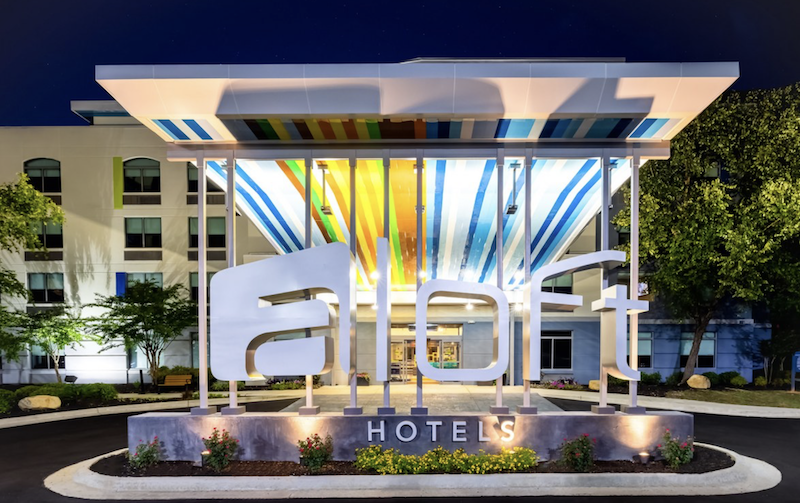
//3877 was the lead architect on the complete conversion of the 100-key Aloft Hotel in Columbia, S.C., which opened in the Summer of 2018 and included a new lobby. The firm believes that hotels will need to convince guests that they are staying a safe environment. Image: The Rohm Group
FLEXIBILITY AND STAFF TRAINING ARE KEYS TO REOPENING SUCCESSFULLY
Wyman sees flexibility as the key, “where options that allow varied gathering reconfigurations are paramount.” Griz Dwight, AIA, LEED AP, Principal and Owner of GrizForm Design Architects in Washington D.C., says his firm has been talking with many of its hospitality clients about how to reconfigure a space’s layout so that it creates more of a circular pattern for foot traffic versus straight in and out. In terms of restaurant design, “we might see more loose tables and fewer banquettes and booths,” or on the other hand “more intimate, secluded spaces” that incorporate four-top booths and private areas, says Dwight. Bar stools will need to be spread out to give patrons more room.
The three design executives espouse nonporous cleanable fabrics, preferably with antimicrobial features. Shove-Brown speculates that hotels might bounce back a little quicker than restaurants “as they are easier to clean and allow safe social distancing.” Restaurants, he adds, will need to become “more adaptable,” and demonstrate “increased resilience” that will take more time to implement.
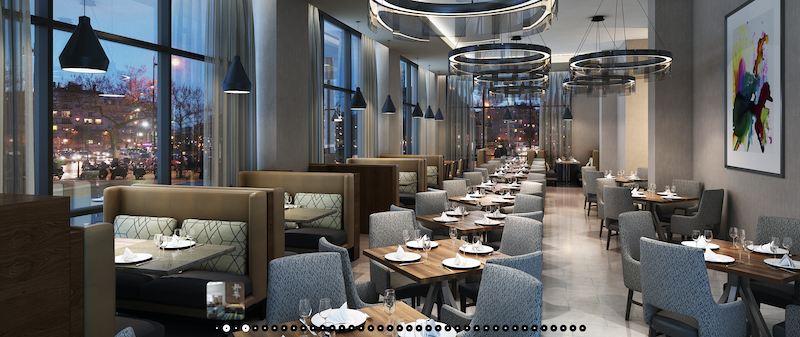
One of MatchLine Design Group's recent restaurant projects. To reopen, restaurants are going to need to reduce their capacities, at least initially, which will mean more spacing between tables and booths, and possibly more secluded and private spaces. Image: MatchLine Design Group
MatchLine is now also specifying products that can function with fewer touchpoints, such as automatic window treatments and lighting scenarios based on the guests’ location within a room. “We may even be looking to integrate air filtration systems within spaces and have that become part of the design itself,” says Wyman.
Hotels and restaurants must do a better job of alerting their customers of their new cleaning and infection-control regimens. But Shove-Brown is wary about design overkill. “People need to remember that this will pass. As designers and architects, we must look to temporarily fix the industry, not redesign it.” His temporary solutions include plastic dividers, UV lights, and touchless features in restrooms that “will ease guest discomfort.” He also believes that “clean” ultimately will come down to training staff to disinfect diligently and overtly “to ensure [that] guests feel safe.”
Related Stories
Coronavirus | Apr 8, 2020
COVID-19 alert: Most U.S. roofing contractors hit by coronavirus, says NRCA
NRCA survey shows 52% of roofing contractor said COVID-19 pandemic was having a significant or very significant impact on their businesses.
Coronavirus | Apr 8, 2020
Navigate supply chain and manufacturing challenges during disruption
First, most important and most complex: Create an extensive safety plan for your facilities and job sites that protects both the personnel onsite and the end users of your product.
Coronavirus | Apr 7, 2020
How to turn a high school into a patient care center in 15 days
HKS’s concept paper presents three scenarios.
Coronavirus | Apr 7, 2020
New Trump administration guidance now allows firms with 500 of fewer employees to qualify for paycheck protection program loans
Associated General Contractors of America secures fix to loan qualifications after alerting administration officials to small business administration language that excluded many firms.
Coronavirus | Apr 6, 2020
New small business administration loan guidance appears to exclude many construction firms that employ fewer than 500 people
Construction officials urge agency to make clear that firms that employ 500 or fewer people to qualify for paycheck protection program loans, regardless of revenue.
Coronavirus | Apr 6, 2020
Pandemic preparedness: How hospitals can adapt buildings to address worst-case scenarios
A Canadian healthcare architect looks at how hospital staff can act now to modify facilities and contain a pandemic.
Coronavirus | Apr 5, 2020
COVID-19: Most multifamily contractors experiencing delays in projects due to coronavirus pandemic
The NMHC Construction Survey is intended to gauge the magnitude of the disruption caused by the COVID-19 outbreak on multifamily construction.
Coronavirus | Apr 5, 2020
King County, Wash., addresses homelessness and COVID-19 with rapid-response site conversions
The county is adding 2,500 beds within a dozen Assessment & Recovery Centers that DLR Group helped to design.
Coronavirus | Apr 4, 2020
COVID-19: Construction completed on first phase of Chicago's McCormick Place into Alternate Care Facility
Walsh Construction, one of the largest contractors in the city of Chicago and in the United States, is leading the temporary conversion of a portion of the McCormick Place Convention Center into an Alternate Care Facility (ACF) for novel coronavirus patients. Construction on the first 500 beds was completed on April 3.


